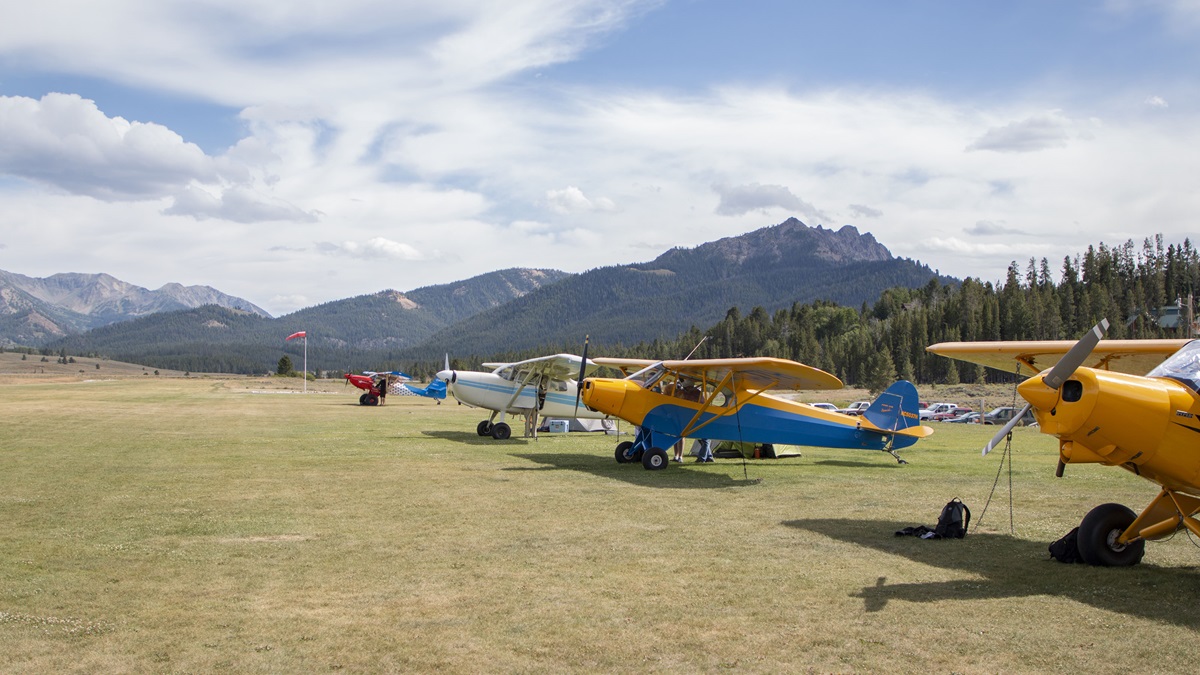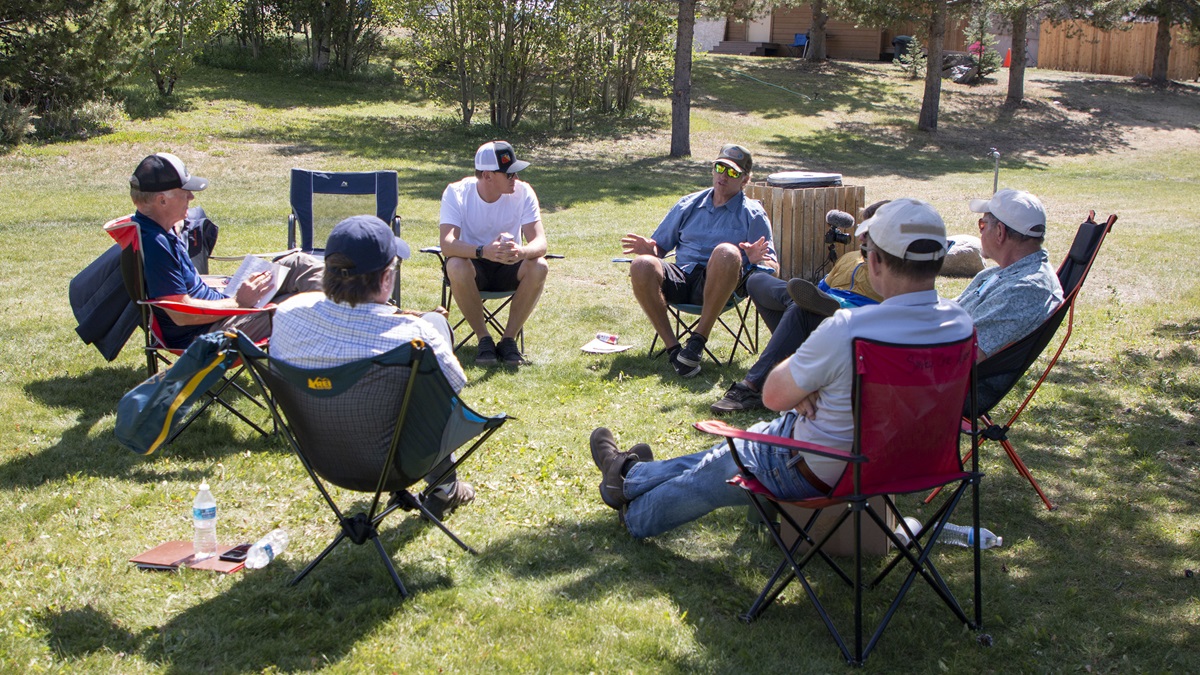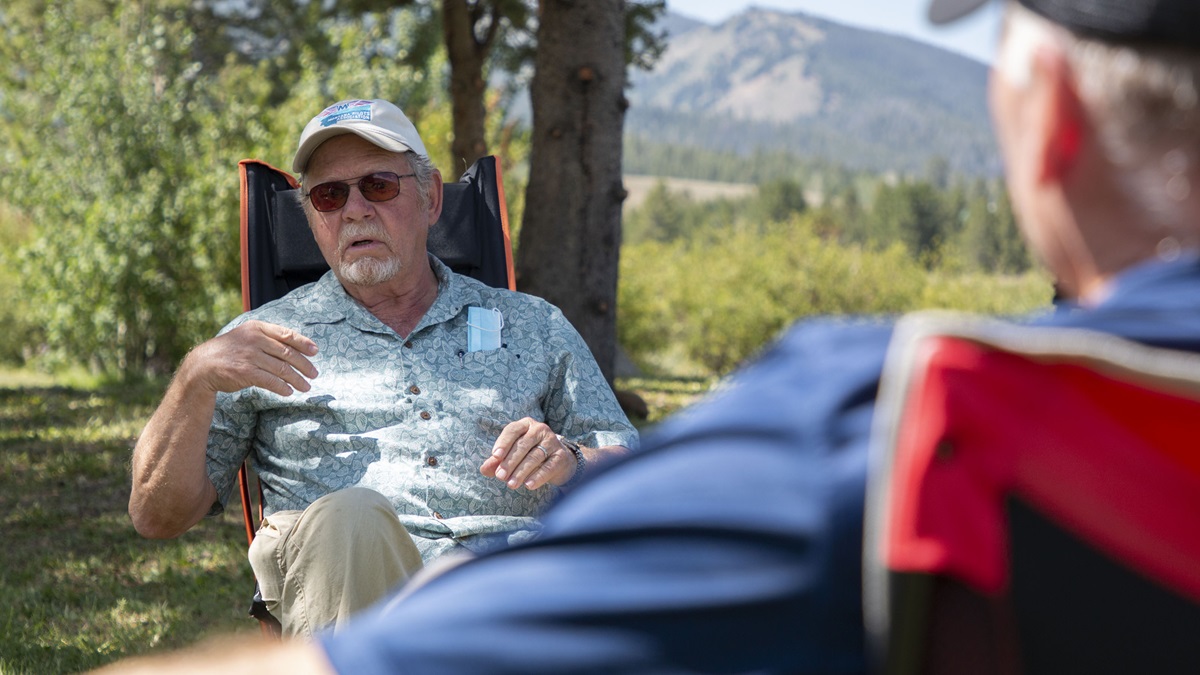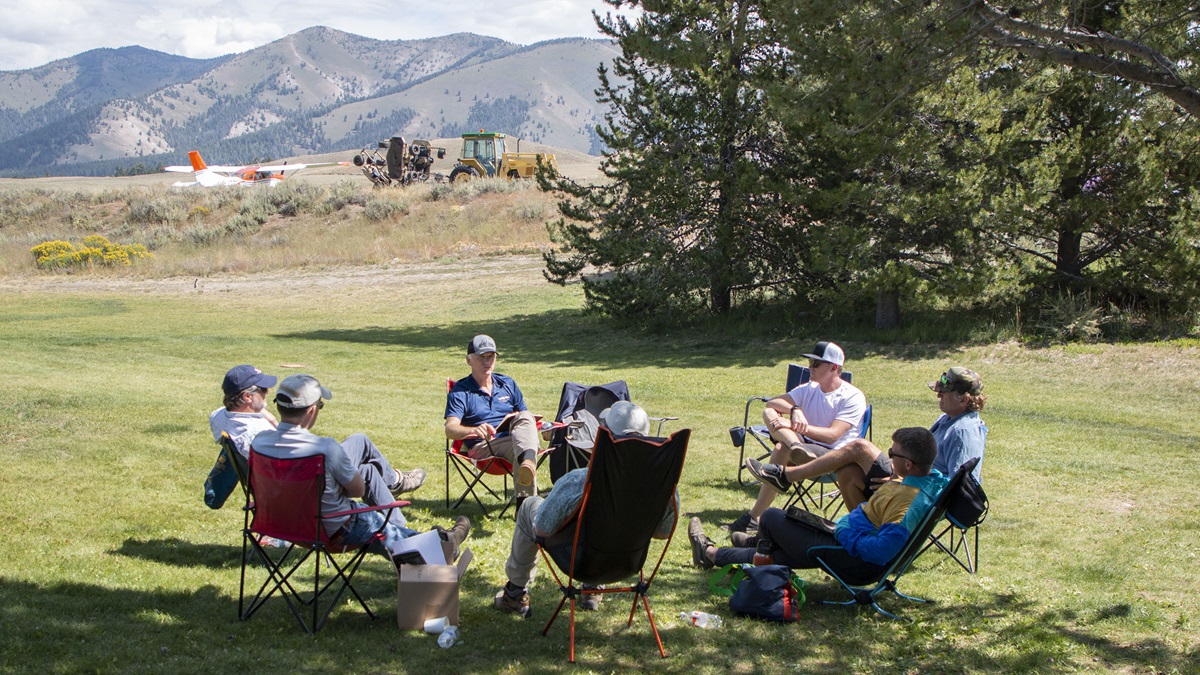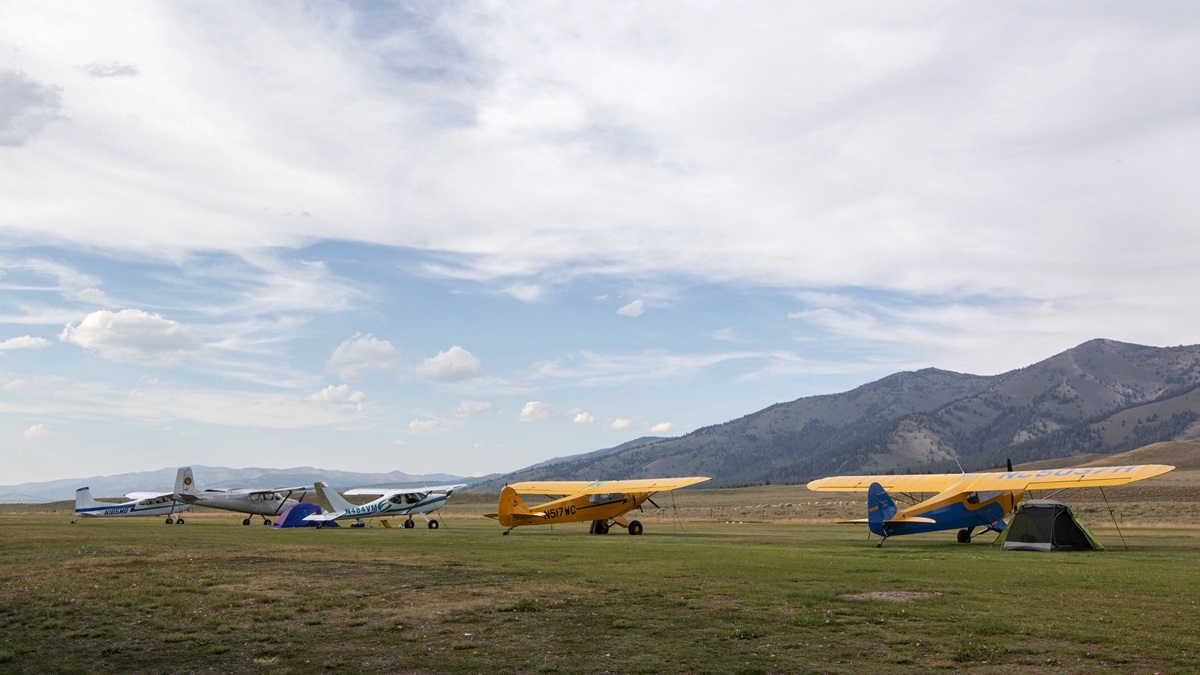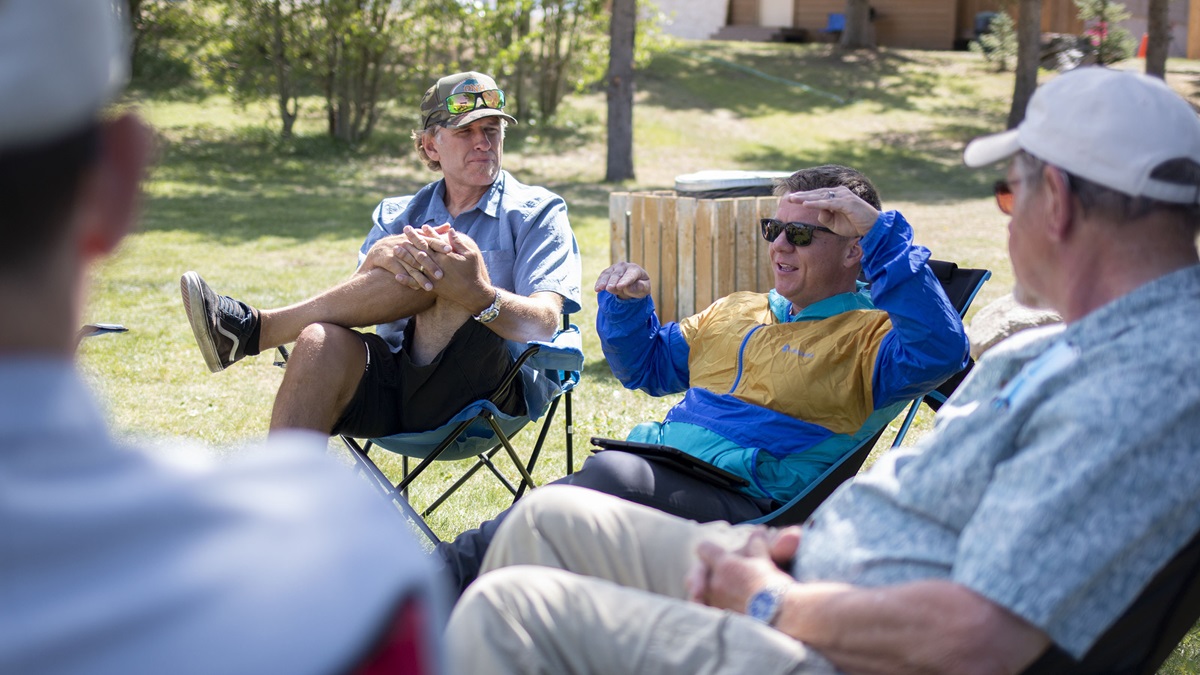Safety in the backcountry
It’s no secret: Backcountry and mountain flying have gained tremendous popularity in recent years. Pilots who participate in this sector of aviation have myriad reasons for doing so—a new challenge, a great way to sharpen their flying skills, breathtaking views, and a chance to get off the grid for the ultimate feel of freedom. Whatever the reason, the allure of flying the backcountry is undeniable.
This type of aviating comes with a unique set of challenges, and therefore, risks. The past year has seen some troubling mishaps in the backcountry, and that was the catalyst for a recent Backcountry Safety Summit that AOPA hosted on August 12 at the Smiley Creek Airport in Idaho.
AOPA President Mark Baker and AOPA Air Safety Institute Senior Vice President Richard McSpadden joined Idaho Aviation Association President Andrew George, Idaho Division of Aeronautics Safety and Education Coordinator Tim Steffen, Montana Pilots Association President Michael Vivion, Utah Back Country Pilots Association President Roy Evans II, and Flying Cowboys/YouTubers Trent Palmer and Kevin Quinn for the safety summit. All are experienced backcountry pilots, and all had flown themselves in for the meeting.

McSpadden kicked off the summit, which took place in a grassy camping area next to the airstrip, under the shade of pine trees and nearby pavilions. The jagged Sawtooth Mountains provided a pleasant backdrop while a comfortable late-summer breeze cooled the clearing.
“The fact that we’re getting together, to me, is a powerful statement,” McSpadden said. “We all have a shared interest in protecting this great experience, and seeing it grow responsibly and safely.”
By bringing together organization leaders with substantial credibility and following, McSpadden said he hoped the event will make an impact.
Baker echoed McSpadden’s opening statements, sharing his desire to “keep aviation safe, make it fun, and invite more people into it.” Baker said he likes what the STOL and backcountry disciplines have done for the aviation community, and he’s excited about the next generation of pilots.
As the participants each shared introductions, George, who is no stranger to the backcountry himself, said he (affectionately) refers to this new generation of backcountry pilots as “dirt bikers.”
“When I was a kid, boy, if you were a dirt biker, you were out, you were trying things, you were just being crazy and having a good time,” George said.
He said he sees aviation as having a subset of pilots with similar sensibilities.
“I think that 20- to 40-year-old group has yet to evolve into the thoughts of preservation,” George said, “but I think that message needs to start being driven in that area, so that they become the next caretakers, so they’re the custodians of what we’re all working on today.” The sentiment was met with nods of agreement.

Over the next few hours, group members shared their individual experiences and thoughts on the safety aspects of backcountry flying, and what’s lacking in the current education available. A common discussion point was wanting people to have a good experience in the backcountry. In order to have a good experience, pilots need to be prepared, practice power and energy management, and make good decisions. Often, there is a gap between what pilots have learned in their formal training and the skill set they need to operate in the rugged backcountry environment.
Another theme was safety culture and messaging.
One of the Air Safety Institute’s major goals is to encourage good flying and good decisions without repelling people. As McSpadden put it, “Safety can be off-putting to some. It can imply stripping away the fun. How do we overcome that to reach this unique backcountry audience?”
Reaching an audience at all is an ever-present challenge, particularly when it comes to safety content. “To impact how people fly, you have to influence how they think, and to do that, you have to reach them with compelling and engaging material,” McSpadden said. Citing the expertise among the group in influencing pilots across various social media channels, he probed the meeting participants for lessons they’ve learned along the way.
Quinn, who has his own YouTube channel, said that the Backcountry Safety Summit is the kind of opportunity that he looks for. “This whole social media impact that we have… it’s a responsibility that we don’t take lightly,” Quinn explained. He said that as an influencer, it opens an opportunity to talk about decision making to his audience.
Quinn is also the founder of the High Sierra Fly-In in Nevada and said that safety is one of his biggest focuses. He drew comparisons from the event to the backcountry.

“Ten or eleven years into it, we’ve learned a lot from that,” Quinn said. The STOL drag at High Sierra gives them the opportunity to help train pilots on power and energy management, precision flying, and spot landings.
As the meeting wrapped, McSpadden informed the group that he would compile the highlights and discussion points in order to continue the conversation.
The next steps will include forming a set of guidelines and instruction on how to enjoy flying the backcountry safely, with continued input from all.
Steffen said he hopes to apply the discussions started in the meeting to future seminars and educational material from Idaho’s Division of Aeronautics.
Palmer and Quinn plan to work the safety discussions into their future YouTube content.
Regarding his and others’ content and love of backcountry aviation, Palmer said, “Through all of this, it seems like we’ve gotten a lot of eyes on it, we’ve gotten a lot of people that are excited to come out and experience it, but at the same time there’s a little bit of diligence that we need to hold ourselves to, to talk about the safety side,” adding that he wants to make sure that people are coming out and having a good experience, and “a good experience is going to be a safe experience.”
“It was great to get everybody’s feedback,” said George. “I think we came together with a lot of consensus that there is a need to be safe, and there is a need to get a better education system out there that allows people to come to the backcountry, have the experiences that they want to have, be able to come back again and again, and obviously avoid any type of tragedies or accidents.”
George also acknowledged that there is much work to be done.
“One of the things that we really realized out of the meeting was that that communication needs to be consistent, needs to be concise, and it needs to be supported by national organizations as well as given the stamp of approval by the local associations and the users that are here on a local level.”
Quinn shared his thoughts as well. “To be able to have all these like-minded folks here in a roundtable discussion with an immense amount of experience, I think that it’s our responsibility to put it out to the masses that we want you to come and enjoy this backcountry,” he said, “and there’s a specific skill set that’s required to get to these places.”
“We have a real captive audience right now that’s wanting to pay attention,” Quinn said. “We’re trying to keep their attention with the right messages.”


